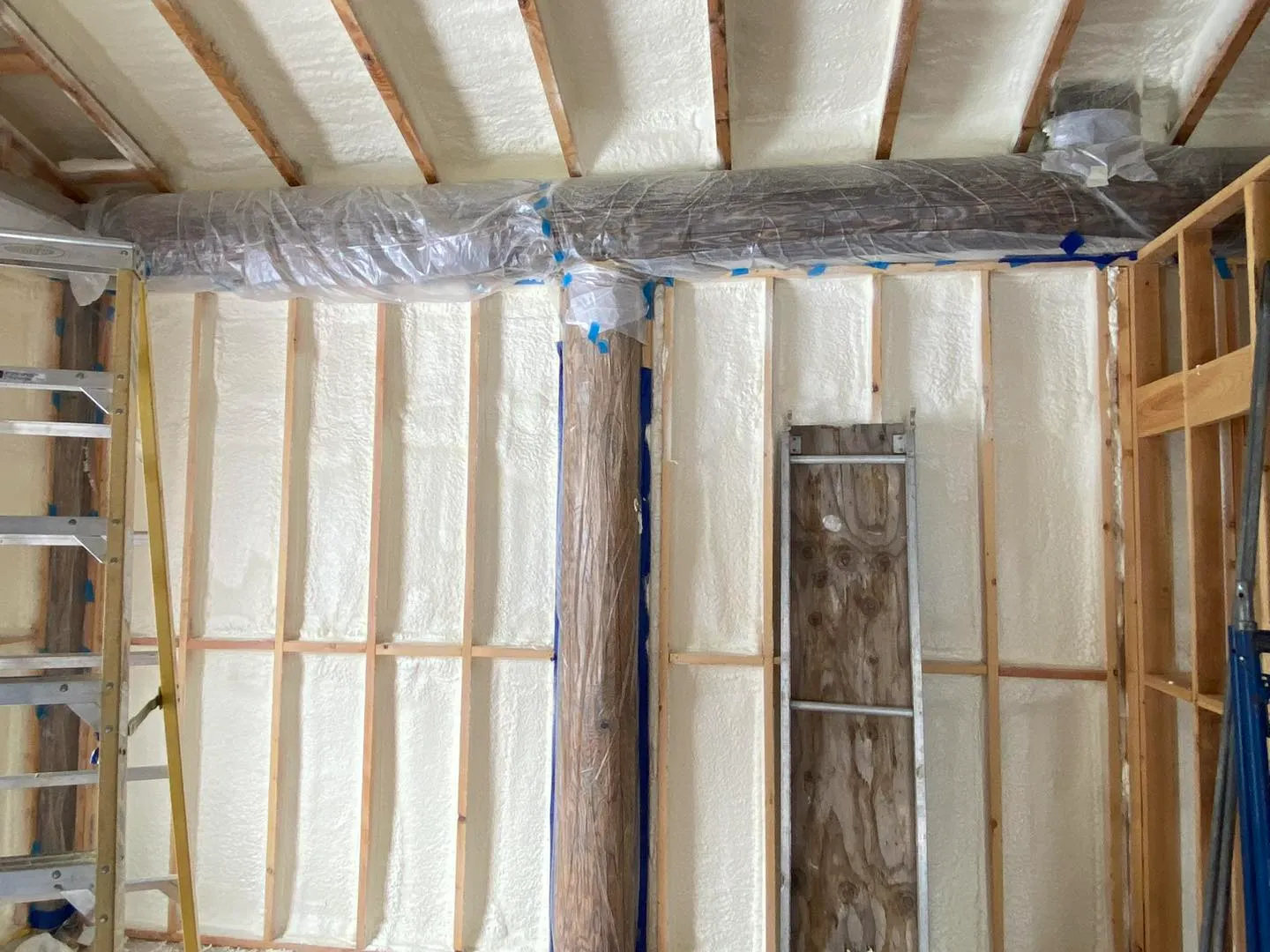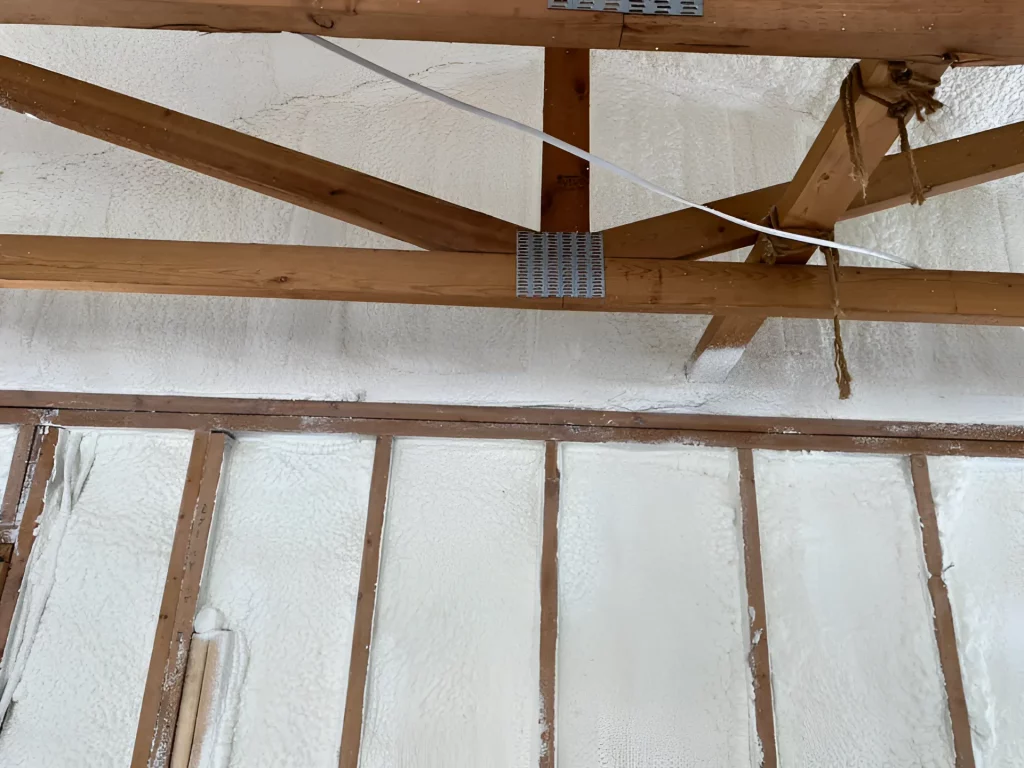
A quiet, comfortable bedroom is essential for restorative sleep, and the right insulation is a major factor in creating that environment. For homeowners in Driggs, Idaho, open-cell spray foam insulation offers a direct solution to common sleep disruptions by controlling noise and maintaining stable indoor temperatures. Its unique structure acts as both an air barrier and a sound absorber, effectively sealing a home against the region’s harsh temperature swings and blocking out unwanted noise. This results in a more peaceful and consistent sleeping environment, leading to deeper and more restful nights.
Environmental factors are a leading cause of poor sleep. According to sleep health experts at the Sleep Foundation, noises as low as 40 decibels can disrupt rest, while temperature fluctuations can prevent you from reaching the deeper stages of sleep. Your home’s insulation acts as the primary buffer between your bedroom and these outside disturbances.
In a place like Driggs, where winter nights are cold and winds can be persistent, inadequate insulation leads to drafts and cold spots. This forces your heating system to work harder, creating noise from the furnace kicking on and off. A properly insulated home, however, maintains a steady temperature and remains quiet, directly contributing to a better night’s sleep.
The primary advantage of open-cell foam for sound reduction lies in its physical structure. Unlike dense materials that reflect sound waves, the soft, pliable cells of this foam absorb them. When installed in walls, floors, and ceilings, it effectively dampens airborne noises.
This sound absorption helps minimize disturbances from:
Bonus Tip: For maximum quiet, consider applying open-cell foam in the interior walls between bedrooms and other living areas, like the living room or bathroom. This application creates an effective sound barrier that enhances privacy and peace.
The climate in the Teton Valley presents a unique challenge for homeowners, with significant temperature drops overnight throughout the year. Open-cell spray foam creates a powerful air seal by expanding to fill every crack and gap in a building’s structure. This air barrier is what stops drafts and prevents conditioned air from escaping, which is a critical function for both comfort and energy efficiency.
By stabilizing the indoor temperature, open-cell foam prevents your bedroom from becoming too cold or too hot during the night. A consistent temperature keeps your body in a relaxed state, allowing for longer periods of uninterrupted sleep. A report from the U.S. Department of Energy explains that this air-sealing capability is one of the main benefits of spray foam insulation. This thermal consistency also reduces the strain on your HVAC system, leading to a quieter home and lower energy bills.
While both types of spray foam insulate well, they have different properties that make them suitable for different applications. For interior walls and attics focused on comfort and sound control, open-cell is often the better choice.
| Feature | Open-Cell Foam | Closed-Cell Foam |
|---|---|---|
| Sound Dampening | Excellent | Good |
| R-Value per Inch | Approx. R-3.5 to R-3.8 | Approx. R-6.0 to R-7.0 |
| Air Sealing | Excellent | Excellent |
| Moisture Permeability | Permeable (allows drying) | Impermeable (acts as a vapor barrier) |
| Cost | Lower | Higher |
| Primary Use in Homes | Sound control, attics, interior walls | Basements, exterior walls, areas needing a vapor barrier |

A home’s air quality can also affect how well you sleep. Allergens like dust, pollen, and other pollutants that infiltrate a home through small gaps can cause nighttime congestion and breathing difficulties, directly interfering with the ability to get deep, restorative rest. Because open-cell foam creates a thorough air seal, it significantly reduces the amount of these airborne irritants entering your living space.
The U.S. Environmental Protection Agency states that controlling the sources of pollutants is key to maintaining healthy indoor air. By sealing the building envelope, open-cell foam helps create a cleaner breathing environment, which is especially beneficial for people with allergies or asthma.
Bonus Tip: Proper installation is key. Ensure your installer uses low-VOC (Volatile Organic Compound) foam and follows strict guidelines for ventilation during and after application to guarantee the best possible indoor air quality.
Before choosing open-cell foam, homeowners should evaluate a few key factors:
With these factors in mind, let’s address some common questions homeowners have about this insulation.
Ultimately, choosing open-cell spray foam is an investment in your home’s comfort and your own well-being. By creating a quiet, temperature-stable, and clean-air environment, it directly addresses the key environmental factors that disrupt sleep. For homeowners in Driggs, who contend with a demanding climate, it offers a reliable and long-lasting solution for creating a true sanctuary for rest.
For homeowners in the Driggs area considering an insulation upgrade, a professional evaluation is the best next step. An expert can assess your home’s specific needs and recommend the right approach. To discuss your project or ask questions, contact High Country Solutions. Reach out via email at [email protected] or call (307) 248-9063 for a detailed consultation. A well-insulated home is a long-term investment in comfort and health.
Spray foam insulation used in homes is treated with a fire retardant and must meet strict building code requirements. When covered by a thermal barrier like drywall, it is considered safe for residential use.
Professionals spray the foam as a liquid, and it expands within seconds to fill the cavity. The area must be vacated during application and for a specified curing period, typically 24 hours, to ensure safety and proper chemical hardening.
When installed correctly, open-cell foam does not sag, settle, or break down over time. It maintains its insulating properties for the life of the building.
Yes, it can be installed in existing homes, often in attics or crawl spaces. For enclosed walls, it requires a “drill-and-fill” method where holes are drilled into each stud bay to inject the foam.
There may be a faint odor during the curing process, which is why proper ventilation is essential. Once fully cured, professionally installed, quality foam is odorless and stable.
High altitude can affect how the foam expands and cures. It’s important to work with an experienced installer, like High Country Solutions, who understands how to adjust their equipment and formulation for the local atmospheric pressure to ensure a proper application.
Modern open-cell foams are often made with water as the blowing agent, which has a much lower global warming potential than the chemical agents used in many closed-cell foams. Additionally, its energy-saving properties reduce a home’s carbon footprint over its lifetime.